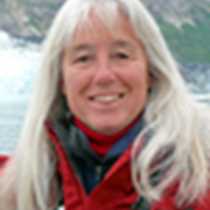Victoria, British Columbia, Canada
Last evening we docked in Victoria and cleared through Canadian Customs. The Parliament building was highlighted, alit with 3,333 light bulbs. On top is the statue of Captain George Vancouver, painted in 14-karat gold.
The Canadian city of Victoria, named after the English queen with the same name, is located on the southern tip of Vancouver Island, just west of mainland British Columbia. The search for the famed Northwest Passage is what first brought many Europeans to this area.
Sheltered in the rainshadow of the Olympic Mountains, Victoria has a reputation for very pleasant weather and is known as a good place for gardens. Neither aspect disappointed us today, and it made for a lovely morning to visit the famous Butchart Gardens. We were agog at the stunning displays of over 6,000 species of flowers, shrubs and trees maintained by over fifty gardeners. The brilliance and range of colors were astounding, and there was an amazing assortment of textures, patterns and shapes. Elegant fountains accent many of the gardens throughout the extensive grounds.
The afternoon was free to visit the Royal B.C. Museum, the Parliament building, the Empress Hotel, and to explore the shops and other sights of Victoria. Along the harbor-front, musicians and other artisans were hoping to draw visitors’ interest to their crafts. Examples of painted fiberglass bears that are situated around the city were intriguing attractions. They will soon be auctioned for charitable causes.
As a special treat after leaving Victoria harbor, we cruised out to Race Rocks, situated between Victoria and the Olympic Peninsula of Washington State. The late afternoon light emphasized the golden tones of Steller (Northern) sea lions, which overlap here with the smaller, darker California sea lions. We could differentiate the two species by voice as we approached a small collection of islets where they haul-out to rest: California sea lions bark, while Steller sea lions roar and growl. Smaller, mottled-silvery harbor seals were scattered along the rocks, recognized by rounded heads and stubby flippers. Gulls, turnstones and oystercatchers were also observed here.
The Sea Lion then turned toward Georgia Strait and tomorrow’s destination.
Last evening we docked in Victoria and cleared through Canadian Customs. The Parliament building was highlighted, alit with 3,333 light bulbs. On top is the statue of Captain George Vancouver, painted in 14-karat gold.
The Canadian city of Victoria, named after the English queen with the same name, is located on the southern tip of Vancouver Island, just west of mainland British Columbia. The search for the famed Northwest Passage is what first brought many Europeans to this area.
Sheltered in the rainshadow of the Olympic Mountains, Victoria has a reputation for very pleasant weather and is known as a good place for gardens. Neither aspect disappointed us today, and it made for a lovely morning to visit the famous Butchart Gardens. We were agog at the stunning displays of over 6,000 species of flowers, shrubs and trees maintained by over fifty gardeners. The brilliance and range of colors were astounding, and there was an amazing assortment of textures, patterns and shapes. Elegant fountains accent many of the gardens throughout the extensive grounds.
The afternoon was free to visit the Royal B.C. Museum, the Parliament building, the Empress Hotel, and to explore the shops and other sights of Victoria. Along the harbor-front, musicians and other artisans were hoping to draw visitors’ interest to their crafts. Examples of painted fiberglass bears that are situated around the city were intriguing attractions. They will soon be auctioned for charitable causes.
As a special treat after leaving Victoria harbor, we cruised out to Race Rocks, situated between Victoria and the Olympic Peninsula of Washington State. The late afternoon light emphasized the golden tones of Steller (Northern) sea lions, which overlap here with the smaller, darker California sea lions. We could differentiate the two species by voice as we approached a small collection of islets where they haul-out to rest: California sea lions bark, while Steller sea lions roar and growl. Smaller, mottled-silvery harbor seals were scattered along the rocks, recognized by rounded heads and stubby flippers. Gulls, turnstones and oystercatchers were also observed here.
The Sea Lion then turned toward Georgia Strait and tomorrow’s destination.




